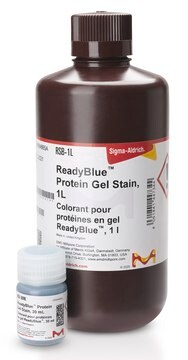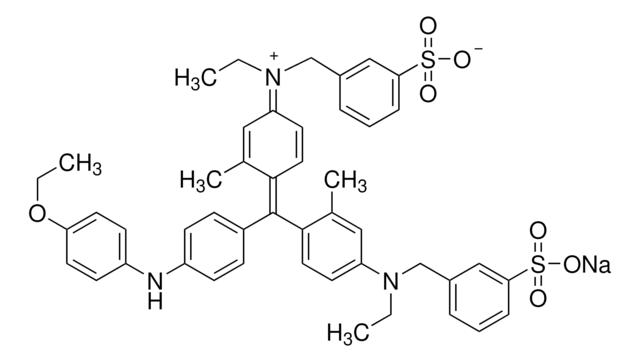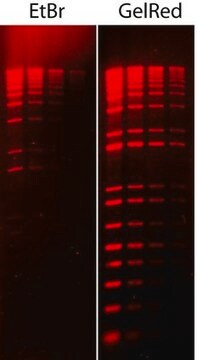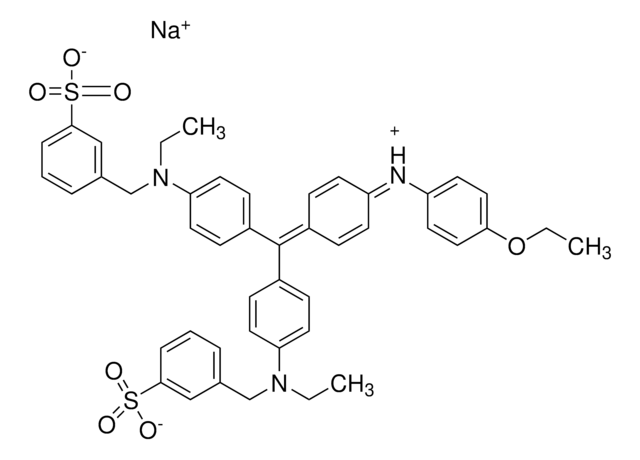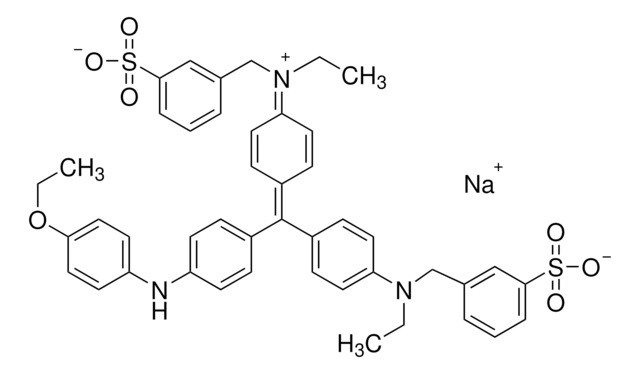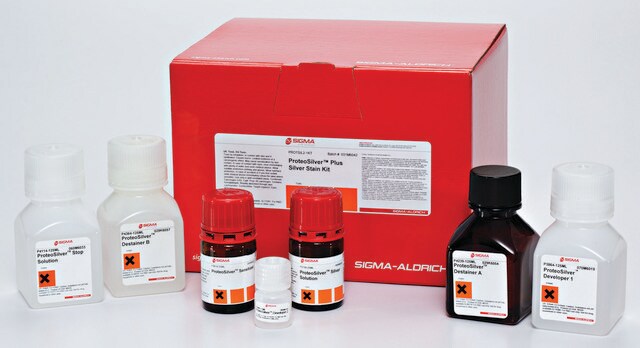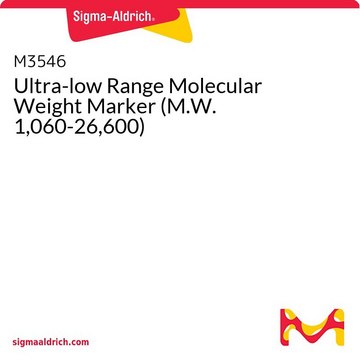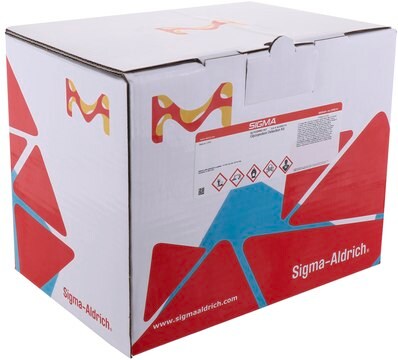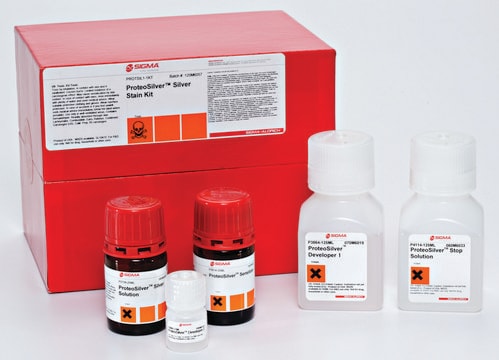G1041
EZBlue™ Gel Staining Reagent
Synonyme(s) :
protein gel stain, protein stain
About This Item
Produits recommandés
Description générale
Application
Caractéristiques et avantages
- Premixed solution eliminates the time and effort required to prepare the stain
- Increased sensitivity ensures that low abundance proteins can be detected (as little as 5 ng)
- Rapid reaction significantly reduces the amount of time required to stain and rinse
- No solvent waste so you save time and money by eliminating hazardous material disposal
Autres remarques
Informations légales
Produit(s) apparenté(s)
Mention d'avertissement
Warning
Mentions de danger
Conseils de prudence
Classification des risques
Eye Irrit. 2 - Met. Corr. 1 - Skin Irrit. 2 - STOT SE 2
Organes cibles
Eyes,Central nervous system
Code de la classe de stockage
8A - Combustible corrosive hazardous materials
Classe de danger pour l'eau (WGK)
WGK 2
Point d'éclair (°F)
Not applicable
Point d'éclair (°C)
Not applicable
Équipement de protection individuelle
Faceshields, Gloves, Goggles, type ABEK (EN14387) respirator filter
Certificats d'analyse (COA)
Recherchez un Certificats d'analyse (COA) en saisissant le numéro de lot du produit. Les numéros de lot figurent sur l'étiquette du produit après les mots "Lot" ou "Batch".
Déjà en possession de ce produit ?
Retrouvez la documentation relative aux produits que vous avez récemment achetés dans la Bibliothèque de documents.
Les clients ont également consulté
Articles
The possible causes and potential remedies for challenges encountered during preparation of samples for SDS-PAGE (sodium dodecyl sulfate polyacrylamide gel electrophoresis) and optimizing electrophoresis conditions.
The use of PNGase Fast denaturing buffer and enzyme yielded results similar to a conventional 20-hour protocol with overnight digest while reducing workflow time to about 1 hour with a 15-minute digest.
To meet the great diversity of protein analysis needs, Sigma offers a wide selection of protein visualization (staining) reagents. EZBlue™ and ProteoSilver™, designed specifically for proteomics, also perform impressively in traditional PAGE formats.
Bis-Tris gels and buffers for superior protein resolution compared to traditional tris-glycine gels.
Notre équipe de scientifiques dispose d'une expérience dans tous les secteurs de la recherche, notamment en sciences de la vie, science des matériaux, synthèse chimique, chromatographie, analyse et dans de nombreux autres domaines..
Contacter notre Service technique